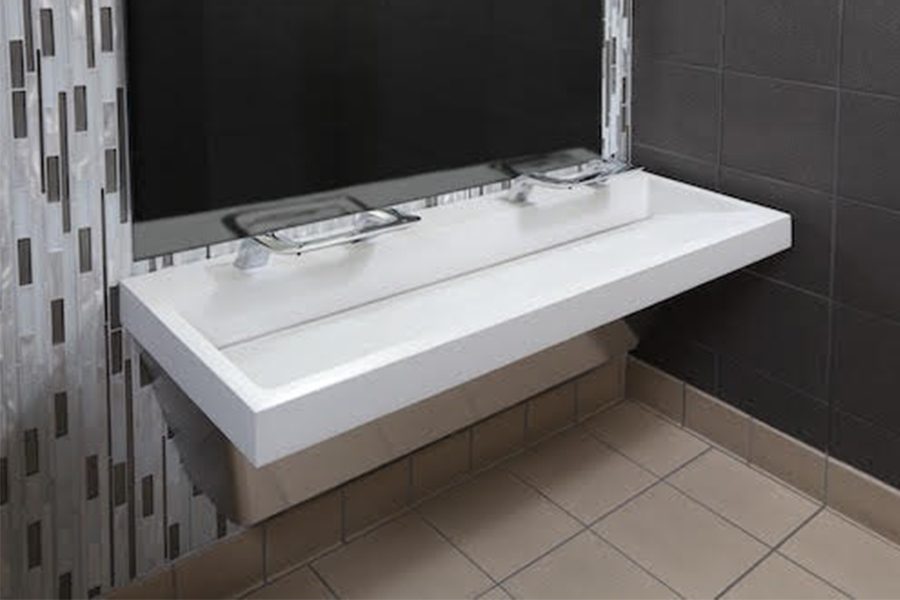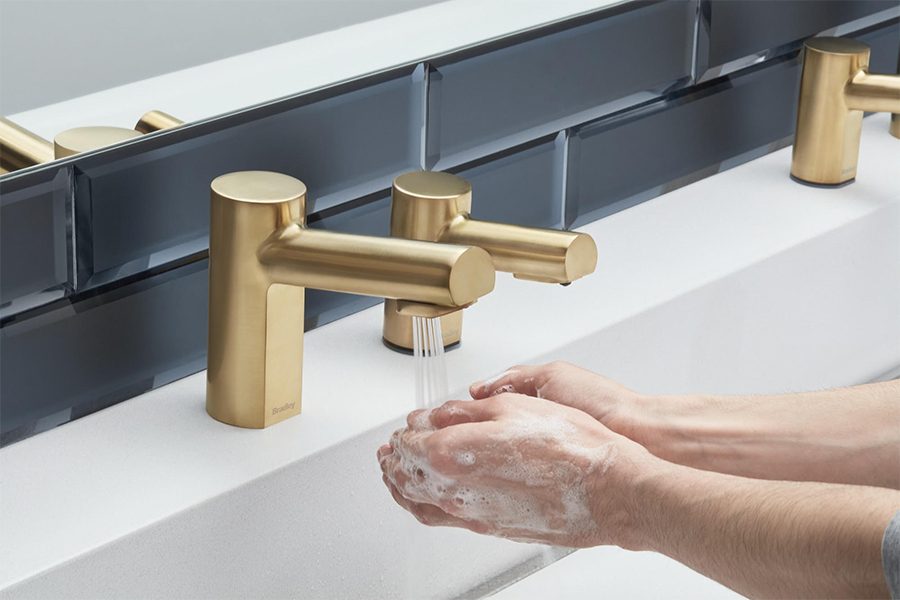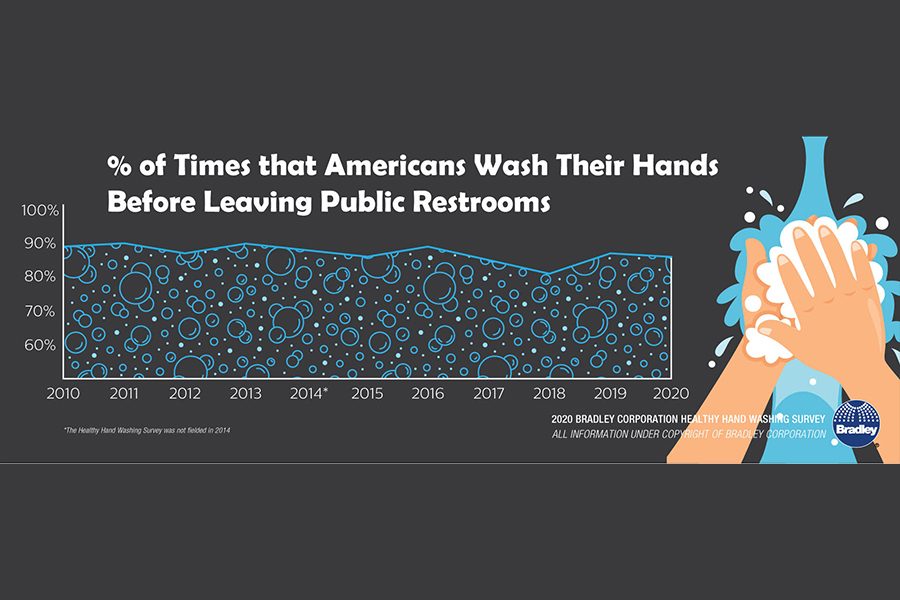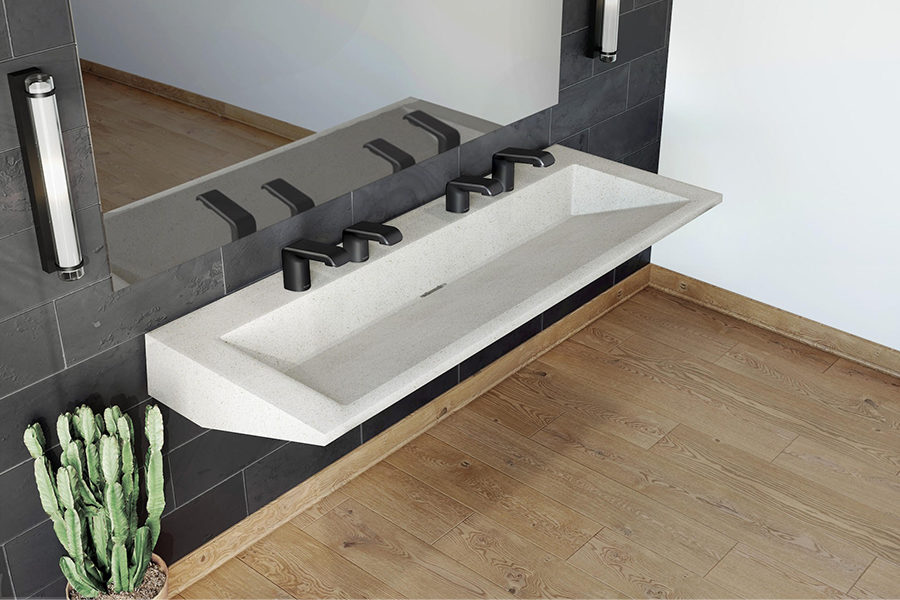Op-Ed: COVID 19 — A Commercial Hand Washing Game Changer


















The unprecedented spread of COVID-19 has placed a more intense spotlight on the importance of frequent and thorough hand washing with soap and water.
Health officials across the United States are unequivocal about the importance of hand hygiene to prevent the spread of the novel coronavirus:
“Thorough hand washing with soap and water remains the best way to reduce the spread of disease-causing microorganisms like COVID-19,” says medical microbiologist Michael P. McCann, Ph.D., professor of biology, Saint Joseph's University. “Soap and water, used as per the evidence-based recommendations of the Centers for Disease Control and other government agencies, will help reduce the spread of flu and other illnesses in the home and work place.”
That means scrubbing hands with soap and water for at least 20 seconds and drying them well.
Looking ahead to the time when many of us re-engage with our regular public activities, an important question must be asked: Are facilities equipped to support healthy hand washing activity?
“Hand washing in public facilities will be exceedingly important in the coming weeks and months as people return to workplaces, offices, schools, restaurants, stores and other gathering places,” says Jon Dommisse, director of strategy and corporate development for Bradley Corp. “We must take advantage of every opportunity to wash our hands at home and in public. For plumbing engineers and specifiers, it’s imperative to seek out dependable hand washing technologies for removing germs from hands.”
Survey underscores demand for touch-free hand washing fixtures
Since 2009, Bradley Corp. has conducted its Healthy Hand Washing Survey to track Americans' hand washing habits and restroom preferences. When Bradley conducted its last survey of American adults and youth from Dec. 11-16, 2019, COVID-19 wasn’t on many people’s radar. At that time, in response to flu outbreaks, 79 percent of Americans said they wash their hands more frequently, more thoroughly or longer after using a public restroom.
“Flu outbreaks are increasingly causing Americans to be more diligent about hand washing in public restrooms,” says Dommisse. “We hope the number of people washing hands in public places — and at home — has climbed as close to 100 percent as possible.”
Another Healthy Hand Washing Survey finding stands out year after year: Consumers want touch-free fixtures in public restrooms:
- While keeping them cleaner and better stocked is Americans’ most desired improvement in restrooms, making everything touchless is next on their wish list.
- People go out of their way to avoid contact with germs in restrooms. Sixty-five percent use a paper towel to eliminate hand contact with doors and faucets and 44 percent of people operate toilet flushers with their foot.
“As a 100-year industry leader in public space hand washing, Bradley understands best practices in hand washing and reducing germ transmission,” says Dommisse. “Now, more than ever before, touch-free hand washing technologies are at the forefront of limiting the spread of germs in public restrooms.”
The following are two prime examples of Bradley’s newest hands-free technologies designed for use in all types of public facilities:
- Touch-free soap, faucet and dryer
- Smart reliable sensor technology – no false activations
- Contains water in the basin for a cleaner, drier and safer restroom
- Auto rinse feature to clear lines if no activation within 24 hours
New matching Verge soap dispenser and faucet sets:
- Touch-free soap and faucet
- Advanced sensing technology — no false activations
- Works with Verge Basin Systems and any other basin
- Auto rinse feature to clear lines if no activation within 24 hours
- Four matching styles and six finishes
Ensuring cleanliness and supplies in restrooms
For all facilities, public infectious health concerns necessitate that restroom cleaning and maintenance support hand washing of building visitors and occupants. In addition to sanitizing surfaces, this means increased checking and stocking of soap and towels and ensuring that sinks are in complete working order.
Bradley’s WashBar is engineered with the following features to improve cleaning and maintenance, as well as cross contamination:
- A cleaning mode which allows maintenance staff to temporarily disable the functions to allow the hand washing fixture to be cleaned.
- A 1-gallon soap container that requires fewer refills. When the low-level LED indicator illuminates, the soap container is replaced with a new full container, minimizing germ contamination associated with refills.
- To stop germs and bacterial growth in the fixture between uses, the WashBar is programmed to purge water every 24 hours for five seconds if the unit hasn’t been activated. In effect, stagnant water is drained from the piping system and flushed with water to reduce and prevent growth of bacteria.
Hand washing is among the most important actions we must take to protect ourselves, our loved ones and our communities. Businesses can support hand washing, restroom cleanliness and maintenance with dependable touch-free and low-maintenance fixtures.
For more information, visit www.bradleycorp.com/handwashing.




